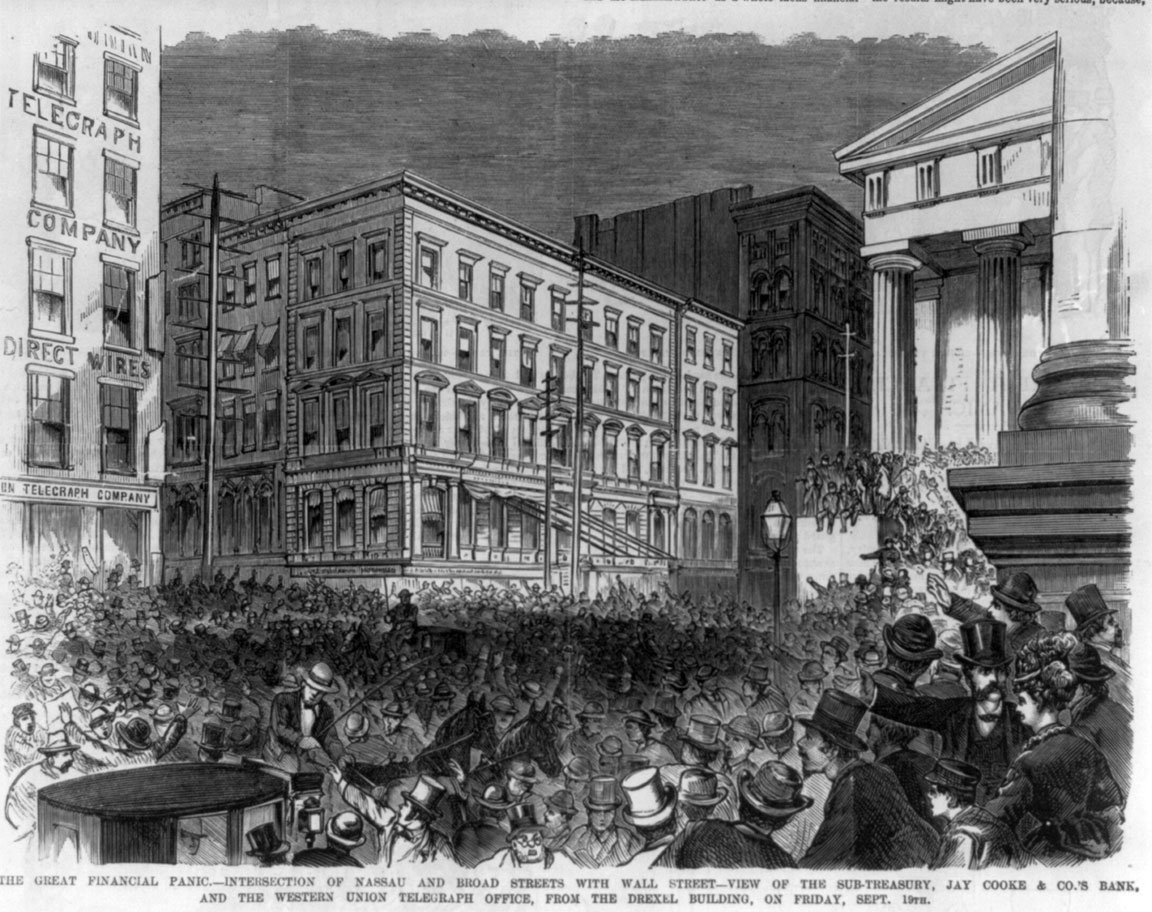Economic Panic of 1873

Apache
Following the collapse of the banking firm of Jay Cooke there was a large scale fall in stock prices. This resulted in a five year depression. The panic of 1873 was a result of over-expansion in the industry and the railroads and a drop in European demand for American farm products and a drop off of European investment in the US.
Like many Panics that presage depressions there was not just one cause to the Panic of 1873 but rather a multitude of factors set the stage. First there was the railroad boom that clearly could not be sustained and was built on borrowed money. Huge amounts of money were required to build railroad whose profitability were often far in the future. In addition during the war the US government had issued millions of dollars of what was then called green backs-today we would just call them paper money. At the time there was a sense that the money supply should be limited and tied, to the physical gold or silver that a country had. Therefore in the US there was an effort to redeem the greenbacks with money backed by silver or gold. Doing this created a currency shortage.
The immediate case of the crash began in Europe. There the German government had decided to only use currency backed by gold instead of both gold and silver. This had the effect of causing a money shortage-at the very time that there was a huge speculative bubble taking place in the newly unified Germany which had just won a war with France. That bubble extended to Austria where the stock market crashed on May 9, 1873. While the crash did not immediately spread to the US it had an impact. The decision of the Germans to move to a gold standard forced the US to follow suite. The Coinage Act of 1873 was passed moving the US to a de facto gold standard, which had the combined effect of further depressing silver prices and creating a currency shortage. That shortage had been impacted by the economic consequences of the Great Chicago Fire as well as a smaller but still costly fire in Boston. All of this combined with a seasonal problem where Eastern banks shipped much of their ready money to the Midwest in the fall, due to the seasonal needs of midwest banks to loan money for crops. European investment often compensated for this seasonal cash shortage, but after the economic panic in Europe, European investment dried up.
All this came as the railroad boom was at its height and money was constantly needed to finance more building. Jay Cooke & Company which helped sell many of the bonds issued by the government during the Civil War, was underwriting the financing of Great Northern Railway. That Railway was the northern version of the TransContinental railroad, this one planning to go from Duluth to Seattle. Jay Cooke and company was overextended and when it tried to sell a planned bond issue for the railroad, it was unable to. Without the bonds it was insolvent and announced it could not meet its obligations and went bankrupt. The news that Jay Cooke was unable to meets its obligations created a panic that forced other banks to close and even closed the New York Stock exchange for 10 days. Railroad construction halted nationwide as credit dried up, thousands lost their jobs, others saw their wages drop. While the panic passed after a year, the Panic of 1873 began a period of extended slow growth in the United State that lasted almost 10 years.
 >
>